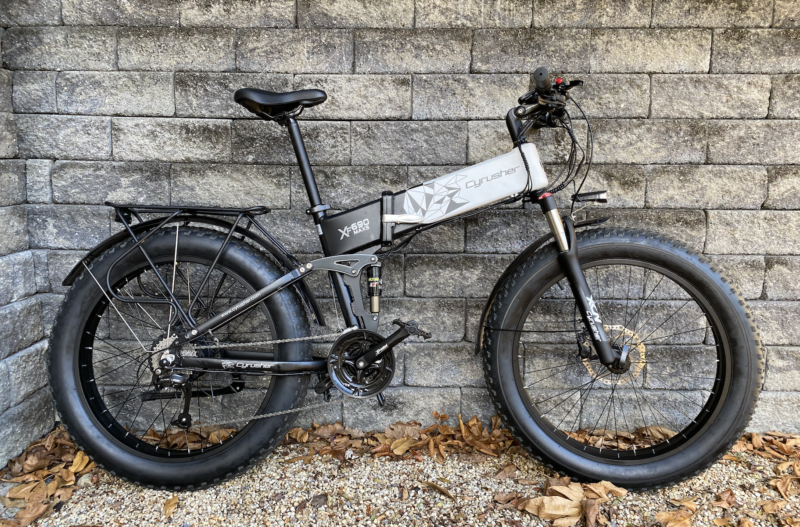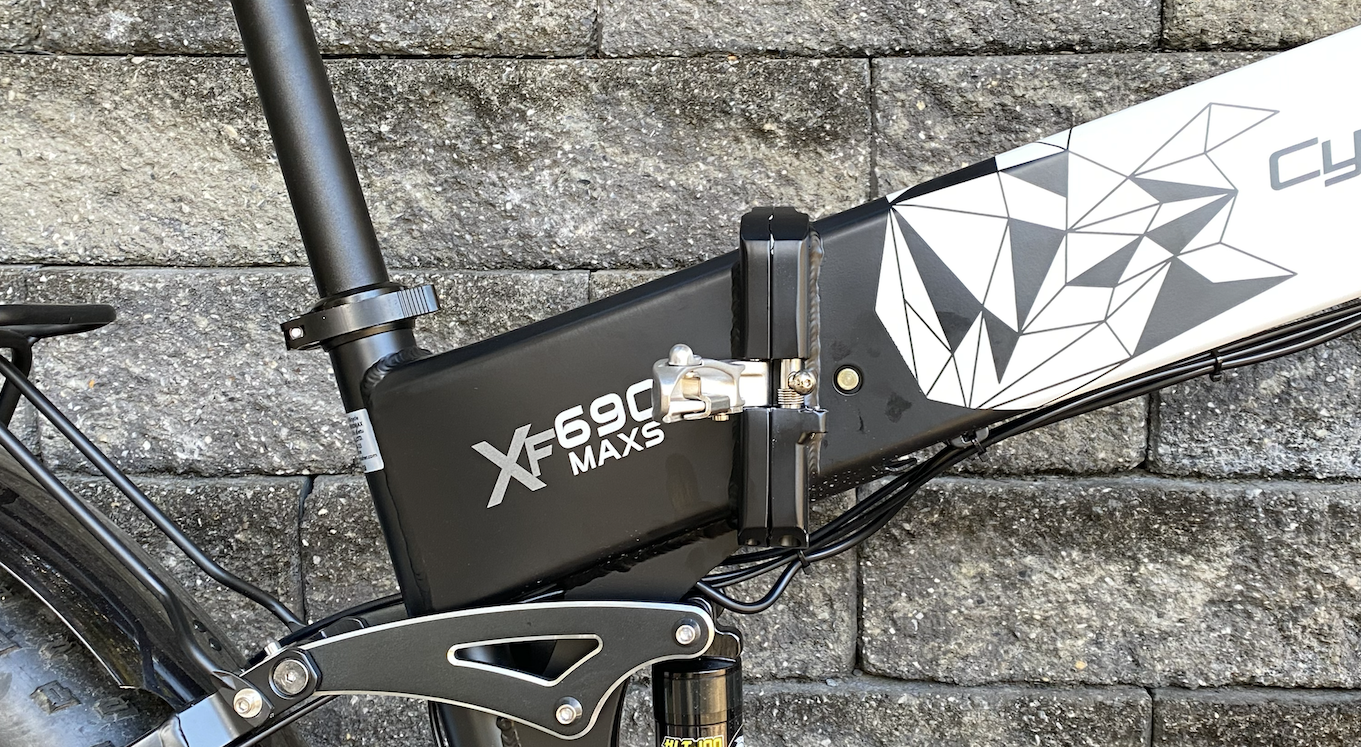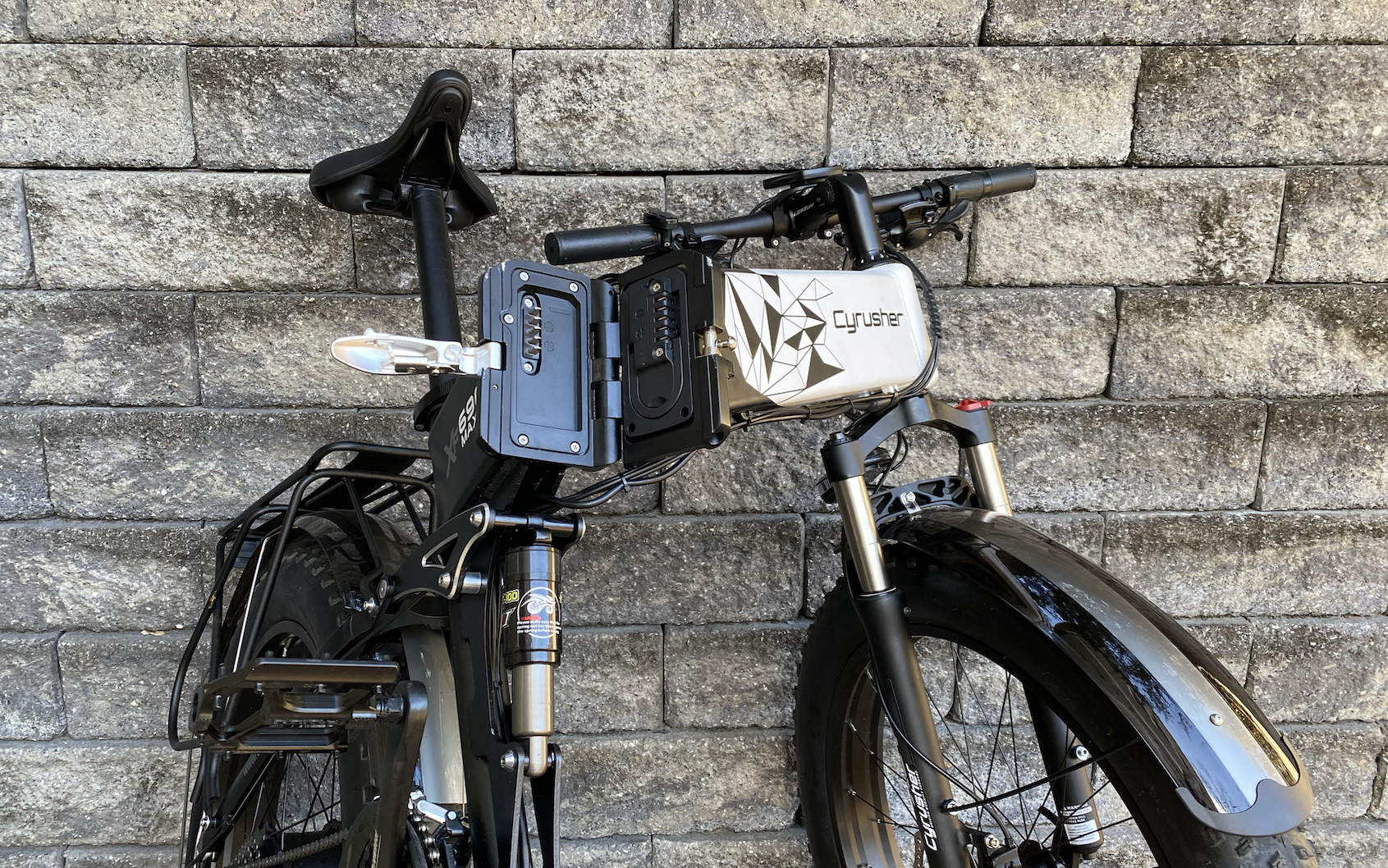
Cyrusher offers a wide range of e-bikes, from basic around-town frames to rugged all-terrain bikes, with the unifying theme being very, very fat tires. I'd seen a number of people cruising around on extra-fat tires (as in, much fatter than a mountain bike's) and was curious about them. Just how much did the huge surface area of these tires slow down your ride? And is the traction they offer worth paying that cost in performance?
So, I was excited about getting the chance to try one out to see for myself. But then I noticed the XF690 Maxs and got excited about a bunch of other stuff, too. It was a folding bike, and I'd been wanting to try one of those. I've spent almost no time on mountain bikes and was curious about taking one across some rough terrain. The XF690 Maxs seemed to offer the chance to scratch a number of itches at once.
It didn't quite work out as I hoped, in that some of the things I wanted to try weren't especially compatible with each other. So, while the XF690 Maxs is an interesting bike, it's somewhat less than the sum of its parts, in that designs dedicated to just one of these capabilities will probably get you a better experience.
Fat is in
There are ongoing arguments about whether you're likely to bike faster on thicker tires. Narrow tires offer less contact with the road, which should reduce friction. At the same time, thinner tires transmit more bumps and vibrations to the frame, which can slow you down. Within limits, these two can balance each other out, and the effects are pretty minor when they're apparent at all.
All of that, however, applies to small differences in tire thickness. If you're comparing a mountain bike tire (even a slick one) to a road tire, the friction of a fat tire will make a big difference. Extra-fat tires can have widths well above 100 mm—nearly twice as wide as the fat tires on many mountain bikes. So you can expect that to make a big difference again. The question to me was, "How much?"
The answer turned out to be "a whole lot." There was no mistaking the fact that pedaling this bike was mostly about fighting against the tires, which felt like they were perpetually trying to slow you down. It was also a heavy bike at 66 lbs (30 kg), which added to the challenge. Even with the electrical assist maxed out, I tended to find myself cruising at about 15 mph (25 km/hr). Even though this bike is legally capped at 20 mph (32 km/hr), it was pretty rare to approach that speed.
Again, that's not because the electric assist was sub-standard. It has a 1,000 Watt motor and a battery that didn't threaten to run out on my trips. It's just a heavy bike with a heavy rider that kept its very fat tires in constant contact with the ground.
The benefits you get from this are ridiculous comfort and stability. Bumps that could wreck a road wheel barely register and certainly don't rise to the level of uncomfortable. Wet leaves, a surface that has occasionally left me fearing for my life on thin tires, weren't a problem at all (I've not seen any snow to test it on, sadly). The ride wasn't responsive, but it was never jarring.
In the fold
Beyond the tires, a lot about the bike is standard mountain bike stuff. The cranks have three chain rings, and there's a full rear cassette, ensuring there are some very low gears that can keep the bike moving even with the assist off. There are front and rear suspensions to smooth out the ride, and a brake set that seems to be standard for affordable e-bikes.
But then there's the very non-standard feature: it folds up. The bike is extremely sturdy in regular use, and there's no hint in the ride that it's anything other than a solid hunk of metal. But click a release and pull a lever, and the largest frame element (a sort of top tube/battery housing that's the only connection between the front and rear of the bike) will hinge back on itself, revealing some of the battery's electrical connectors in the process.


In some ways, this is pretty well thought through. The hinge is arranged so that the bike really can fold nearly in half, dramatically cutting down on one of its dimensions. Cyrusher also welded on a metal brace that will keep your cranks from digging into the dirt once the front wheel is no longer at the front of the bike to support it.
But in other ways, the whole concept doesn't really work. The bike's fairly wide handlebars jut out from the compacted area occupied by the wheels and frame when folded. And the compaction is only relative. This is still a bulky, heavy bike when folded, and it's now much more difficult to move around because you can't roll it on its wheels. It probably fits in some cars better, but lifting it into the back of them is likely to be a two-person job.
So the folding ended up feeling like a well-implemented category error.
Reader Comments (103)
View comments on forumLoading comments...